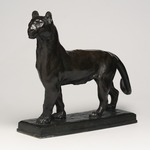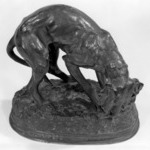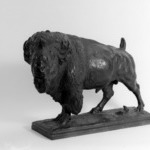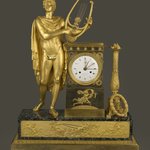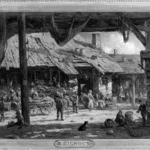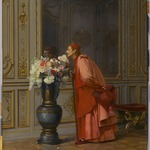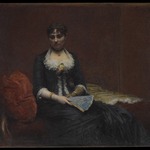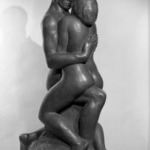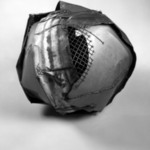
The Prodigal Son, Large Model (L'Enfant prodigue, grand modèle)
European Art
This figure appears several times in The Gates of Hell, and the head also reappears, both alone (see Head of Sorrow, nearby) and attached to other bodies. Its precarious pose and distorted physiognomy conjure a variety of moods, from despondency and helplessness to yearning and supplication. Like many of the writhing bodies and anguished faces created for The Gates of Hell, this figure’s extreme pose—interpreted as a depiction of internal suffering—may derive in part from Rodin’s knowledge of medical illustrations of the convulsions and contortions characteristic of the condition then known as hysteria.
This work has been exhibited under other titles but is commonly called The Prodigal Son, after the biblical parable in which the younger son of a rich man squanders his fortune, suffers deprivation, and ultimately realizes his foolishness and returns to beg his father’s forgiveness.
This work has been exhibited under other titles but is commonly called The Prodigal Son, after the biblical parable in which the younger son of a rich man squanders his fortune, suffers deprivation, and ultimately realizes his foolishness and returns to beg his father’s forgiveness.
CAST BY
Georges Rudier Fondeur, Paris
MEDIUM
Bronze
DATES
late 1880s, cast 1969
DIMENSIONS
54 3/8 x 35 1/2 x 28 3/4 in., 218 lb. (138.1 x 90.2 x 73 cm) (show scale)
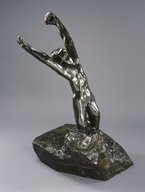


MARKINGS
Back, base, lower edge: ".Georges.Rudier./Fondeur. Paris."
Back, base, lower edge: "© by Musée Rodin 1969"
SIGNATURE
Top of base, in front of proper left foot: "A. Rodin"
COLLECTIONS
European Art
ACCESSION NUMBER
84.75.4
CREDIT LINE
Gift of the Iris and B. Gerald Cantor Foundation
EXHIBITIONS
MUSEUM LOCATION
This item is not on view
CAPTION
Auguste Rodin (French, 1840–1917). The Prodigal Son, Large Model (L'Enfant prodigue, grand modèle), late 1880s, cast 1969. Bronze, 54 3/8 x 35 1/2 x 28 3/4 in., 218 lb. (138.1 x 90.2 x 73 cm). Brooklyn Museum, Gift of the Iris and B. Gerald Cantor Foundation, 84.75.4. Creative Commons-BY (Photo: Brooklyn Museum, 84.75.4_SL1.jpg)
EDITION
Edition: 9/12
IMAGE
overall, 84.75.4_SL1.jpg. Brooklyn Museum photograph
"CUR" at the beginning of an image file name means that the image was created by a curatorial staff member. These study images may be digital point-and-shoot photographs, when we don\'t yet have high-quality studio photography, or they may be scans of older negatives, slides, or photographic prints, providing historical documentation of the object.
RIGHTS STATEMENT
Creative Commons-BY
You may download and use Brooklyn Museum images of this three-dimensional work in accordance with a Creative Commons license. Fair use, as understood under the United States Copyright Act, may also apply.
Please include caption information from this page and credit the Brooklyn Museum. If you need a high resolution file, please fill out our online application form (charges apply).
For further information about copyright, we recommend resources at the United States Library of Congress, Cornell University, Copyright and Cultural Institutions: Guidelines for U.S. Libraries, Archives, and Museums, and Copyright Watch.
For more information about the Museum's rights project, including how rights types are assigned, please see our blog posts on copyright.
If you have any information regarding this work and rights to it, please contact copyright@brooklynmuseum.org.
RECORD COMPLETENESS
Not every record you will find here is complete. More information is available for some works than for others, and some entries have been updated more recently. Records are frequently reviewed and revised, and we welcome any additional information you might have.






